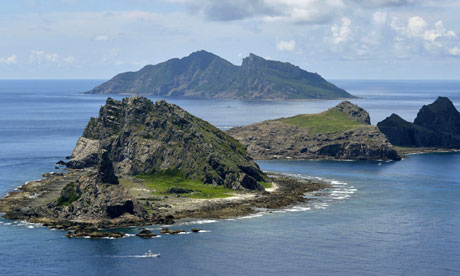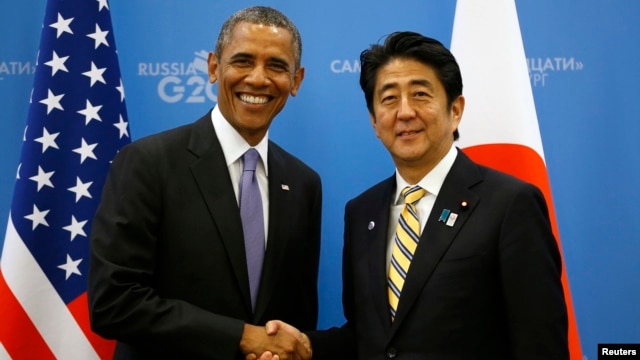In response to ever-increasing Chinese aggressiveness over territorial disputes in the South China Sea, along with the US strategic pivot towards the Asia-Pacific region, the US and Philippine governments have agreed to terms on a new security pact. The agreement on 'Enhanced Defense Cooperation', expected to be signed in Manila on Monday by President Obama and his Philippine counter-part Benigno Aquino III, constitutes a 10-year deal that will usher in enhanced an US military presence. The Philippine constitution, which does not allow for permanent foreign bases, was addressed by a Philippine governmental official, who stated on Sunday in a
press release to the AP, that US troops would be operating on a "temporary and rotational basis" and in conjunction with the Filipino counter-parts. The Philippine military, which stands at around 120,000 troops, is considered by many to be undermanned and under-funded, and has deemed US military assistance necessary to confront current regional issues. Although the US military has had a presence in the Philippines for much of the last century, the relationship has become much more strained over the past few decades. In 1991, highly nationalistic fervor provided the impetus for the Philippine government to expel all US troops in the absence of a 'viable threat' from abroad. Changes to this policy in 1999, and again in 2002, brought US forces back to the Philippines in response to previous Chinese aggression in territorial disputes, and in larger-part to combat the post-9/11 'War on Terror'.
In recent years, increased Chinese aggression towards disputed areas in the South China Sea have raised concerns in the Philippines, to a level significant enough, to once again seek significant levels of foreign military aid from the US. In 2012, China took effective control over the Scarborough Shoal off the northwest coast of the Philippines causing a hotly contested standoff between the two nations. Territorial disputes over the Scarborough Shoal span several decades, as Taiwan also claims control over the contested area. Using the US as an intermediary, the Philippines and China came to agreement over the area, which the Chinese ignored, blocking off access to the area from Philippine fisherman. More recently, a continuing dispute is playing out between the Philippines and China over the Second Thomas Shoal in a nearby area. The shoal, which is also claimed by Taiwan, Brunei, Vietnam and Malaysia has been brought by the Philippines to the Permanent Court of Arbitration under the U.N. Convention on the Law of the Sea (UNCLOS) in the Hague. Despite these legal steps taken by Manila, China has announced that it will ignore all rulings found by the arbitration and will only resolve associated disputes through bilateral negotiations. In light of recent aggression taken by China regarding territorial disputes with other nations in the region, especially regarding Japan, the cavalier nature characterizing Chinese policy and political response is hardly surprising.
Although the specifics regarding the agreement have not been made public, the invitation appears to be whole-heartedly welcomed by the US, who is seeking to gain greater traction in its strategic pivot towards Asia. Fittingly, President Obama is currently in the midst of
a week-long visit to Asia to meet with leaders of regional allies in Seoul, Tokyo, Manila and Kuala Lumpur. The President has been busy throughout the tour in trying assuage concerns surrounding a hypothetical US military response in the region to future Chinese or North Korean acts of aggression. The concerns have arisen amongst the leadership of US-allied nations in response to Washington's tepid response to the much publicized Russian incursion into Crimea and Eastern Ukraine and events in Syria. As such, a bolstered US military presence in the Philippines is something which the White House fully supports. This agreement, along with training exercises by naval carrier groups and B-52 fly overs are seen as a strategic maneuver by the US and its Pacific Command Group in trying to reassure its allies in the region.
Locations of bases where US troops will be stationed has not made been made public, but it seems more than likely that bases in the north and northwest regions of the Philippines are likely because of their proximity to China as well as the aforementioned disputed territories. The ability to respond to various aggressions by both China and North Korea are vital to US interests in the region and ensuring cooperation with allies in the region is an integral piece of accomplishing this goal. This enhanced security pact with the Philippines, while an important step in moving US policy in this desired direction, is only one of many which it must take. Bolstering its military presence in the Asia-Pacific region, while vital, is simply one piece of an effective overall US strategic plan. It will be imperative that the US does not make China feel as if it has been backed into a corner and that it takes all steps necessary in avoiding an armed conflict. To accomplish this task, the US must accompany its military build-up in the region with skillful diplomacy and tact to offer increased security to its interests and allies in the region.
 The base could potentially give the Japanese the ability to
monitor China’s mainland and track Chinese ships and planes as well. Though Japan never named a specific enemy
when building up these defensive capabilities, it is a well-known fact that the
country and China view each other as threats.
The base could potentially give the Japanese the ability to
monitor China’s mainland and track Chinese ships and planes as well. Though Japan never named a specific enemy
when building up these defensive capabilities, it is a well-known fact that the
country and China view each other as threats.



























